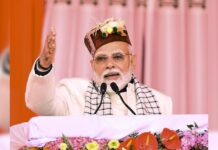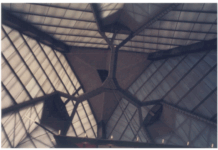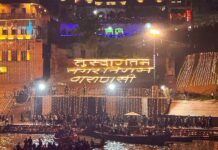 B. N. Goswamy is recognized for describing Indian art history just as Raja Ravi Varma Koil Thampuran is known for creating Indian art – both geniuses who made their fields of interest a much-loved and irreplaceable treasure for the nation. He is the best known Indian art historian, professor, critic and scholar on Pahari and miniature paintings. He also curated major exhibitions of Indian art at the world’s leading museums. The title of the book describes the inner-self and essence of ancient Indian paintings and celebrates different forgotten painters of the past eras of Indian art.
B. N. Goswamy is recognized for describing Indian art history just as Raja Ravi Varma Koil Thampuran is known for creating Indian art – both geniuses who made their fields of interest a much-loved and irreplaceable treasure for the nation. He is the best known Indian art historian, professor, critic and scholar on Pahari and miniature paintings. He also curated major exhibitions of Indian art at the world’s leading museums. The title of the book describes the inner-self and essence of ancient Indian paintings and celebrates different forgotten painters of the past eras of Indian art.
This work of Prof Goswamy is the digest of his life-long dedication to his subject of interest. It is his most matured, exquisite, devoted, and heartfelt creation. In this book, he combines an arduous frame of a scholar, an elegant setting of a connoisseur, a refined mind of an art lover, and a soul of a poet that represents the touch of a gifted writer. This is a book of highest quality ever written by a leading historian on Indian art from the perspective of painters but not from the perspective of historians who generally describe the patronage and dominant style of paintings.
Professor Goswamy explains the themes, emotions and meanings hidden in these 101great works of ancient painters and the socio-cultural values and other cultural influences that shaped their work ranging from Jain manuscripts, Pahari and Mughal miniatures to Company School paintings. These paintings were carefully selected by him from the period spanning nearly a thousand years.
This book is both educational and enlightening about the hidden meanings that lie within these paintings and also teaches the reader the new ways of seeing and appreciating art. This book shows us how to read each painting and intellectualize the story depicted in the painting, and understand how the folklore, cultural, social, and political events that inspired the painter to create that art piece. Goswamy profusely illustrates each painting with scholarship in a great story-telling style. He exercised a great effort to translate the visual vocabulary and language of each painter.
In the first chapter, Prof. Goswamy explains the great ancient paintings that are encompassed in a layered world, which according to him, one thought is gently placed upon another like a couplet with hidden meanings. This can be seen in the paintings of tree of light, Bhagavata Purana, Gita Govinda series and others. He also says that each description in a painting is appealing and contains much truth. Even though each object in the painting is saying a single thing in a layered world, it conveys an overall meaning of that painting to us.
Visual immersion in the work provides us the richness that resides within, intrinsic beauty, and the historical circumstances that shape them when one unravels object by object and layer by layer. He states that this becomes possible only when the viewer knows how to read a painting. In the later chapters, the paintings are bludgeoned together under different topics such as visions, observation, passion, contemplation.
The paintings that are put together under the topic of Visions reveal something seen in a trance or abstract or imagination that may exist in mystical or non-mystical appearance and conveys a disclosure or revelation. The creators of these paintings exhibited an unusual discernment or foresight.
Their paintings show their endless magical awareness of imaginary things in visible form. We see such wondrous and mysterious visions in the paintings of Hiranyagarbha -the Cosmic Egg, Shiva and Paravati among the Clouds, the Devi Diagram as few examples. The superb part of these paintings is that the power of seeing the themes of the paintings by the painters with the special sense by which the qualities of objects as color, brightness, shape, size and notion constituting their appearance are perceived.
The paintings in the Observation chapter display the action, idea or process of observing something or someone carefully in order to gain information. Painters of these paintings draw their excellent inferences from the observations that are made by the objects in their art. In these paintings, something is seen or experienced or an idea came to the objects in the paintings in a vision is very cleverly illustrated by the artists.
A Young Scholar, a Chameleon, Ibrahim Adil Shah Hawking, and Jahangir with a Portrait of Akbar stand as a few examples of this category. Paintings in the chapter entitled Passion, express a strong desire or feeling of enthusiasm or excitement for something or devotion about doing something, may be some activity, object, or thought and some paintings reveal a strong sexual or romantic feeling for someone. An Elopement, Raga Vasanta, a Glimpse of the Loved One, the Boat of Love, and Two Lovers are a few examples of paintings of passion.
In the last chapter: Contemplation, the paintings demonstrate the act of thinking deeply about something, or showing concentration on spiritual things as a form of private devotion or a mystical awareness of God. Paintings like Intimation of Mortality, Five Holy men, Meditating Dervish, and a Yogini depict the concept of contemplation very well. These chapters divulge his knowledge and insight about paintings in a lucidly and logically written text.
Prof. Goswamy has created a book that helps the common readers in general and the specialist in particular to understand that these paintings are not produced to fulfill a royal patron’s fancy but to relate the works of the artists to the world around them – religions, literature, historical events, and socio-cultural situations and give back the artists the honor that belonged to them. He shares with readers his lifelong familiarity and understanding of these marvelous paintings. This is the best possible summary of the various traditions of paintings in India.
This book opened up and laid guideline to many future studies. There are many regional forms of paintings and folk arts for the scholars to research and bring out their contributions to Indian art by throwing light on their origin, patrons, artists, and events that shaped them. In the recent times, a few scholars have attempted to look at Indian art from the point of view of the artists but not at such a variety of paintings spread over a thousand years.
The reasons being that there are no descriptions or evidences about the names, styles, or works of these artists. Unlike the artists of Renaissance or the Western World these artists remain as unknown or sometimes their names are hidden in the details of the paintings as described by Prof. Goswamy, ‘the painter’s name – Nanha – discreetly inscribed in Persian characters on a small rock in the bottom of the painting (p. 299).’
As a reader of this book, I found that although the selection and organization of these captivating paintings is brilliantly done; the introductory connective note for each chapter is missing. An opening message clarifying the concept and goal of each chapter would have made it easier for the reader to understand the theme of the paintings or connection between paintings and title of the chapter as each chapter starts with a description of a painting.
The Spirit of Indian Painting is definitely one of its kind and truly a masterpiece and one of the greatest books ever written on Indian art from the point of view of painters. It is rightly said that this book is the summation of Goswamy’s whole career. It is possible only for a person with such a lifelong experience with paintings to explain the hidden meaning of paintings and reveal the feelings, emotions, and circumstances under which the artists created their paintings, what made them paint the way they did, and how they came to choose their the visual images, colors, settings, and symbols. This book on understanding and appreciating of painters of bygone age definitely ranks among the greatest works on paintings in India.
Geetha Patil






